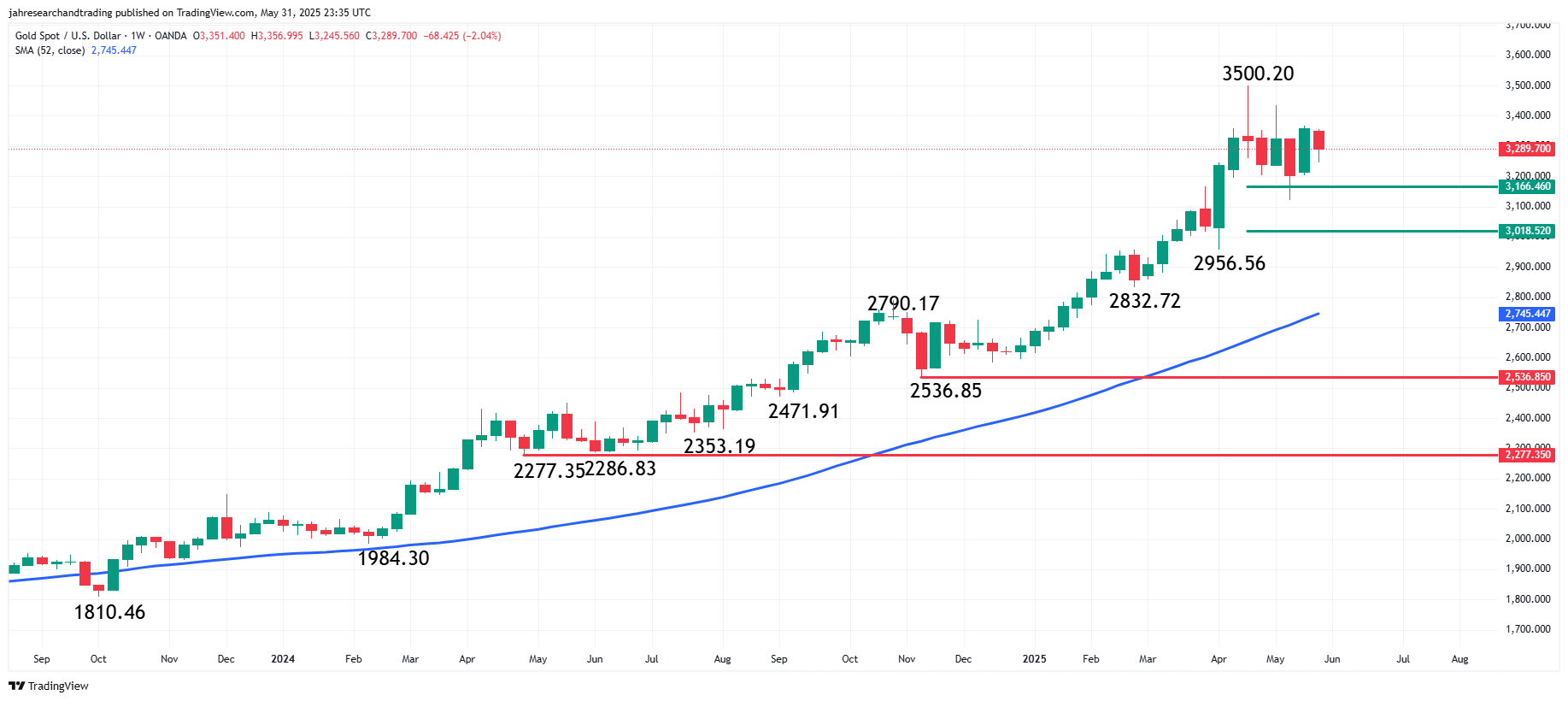Gold Eases as Fed Patience, Strong Dollar, and Tariff Confusion Dominate
Gold prices ended the week softer, falling over 2% as traders navigated a dense fundamental calendar marked by mixed inflation data, evolving trade policy risks, and Federal Reserve commentary. Despite episodic support from safe-haven flows, bullion demand was muted by a stronger dollar and elevated Treasury yields.
Tariff Policy Uncertainty Fuels Safe-Haven Interest but Lacks Clarity
President Trump’s renewed tariff efforts remain in legal flux after a U.S. trade court blocked sweeping duties, only for a federal appeals court to temporarily reinstate them the next day. The administration is reportedly exploring the Trade Act of 1974 to reimpose tariffs of up to 15% for 150 days. While these developments introduce risk, the lack of clear direction has left traders cautious. Market participants remain alert to further headline shocks as the situation evolves.

Experts trade the markets with IC Markets
Trading Derivatives carries a high level of risk to your capital and you should only trade with money you can afford to lose. Trading Derivatives may not be suitable for all investors, so please ensure that you fully understand the risks involved, and seek independent advice if necessary. A Product Disclosure Statement (PDS) can be obtained either from this website or on request from our offices and should be considered before entering into a transaction with us. Raw Spread accounts offer spread
Fed Signals Patience as PCE Inflation Eases Slightly
April’s core PCE inflation came in at 2.1% year-over-year, slightly below the expected 2.2%. While this supports the case for rate cuts, Fed officials reiterated a patient stance. Minutes from the May meeting confirmed that policymakers view current economic conditions as strong enough to delay policy moves. Chair Jerome Powell emphasized a wait-and-see approach, citing elevated inflation and policy-related uncertainties. Markets continue to price in a rate cut by September, though confidence has waned.
Dollar Strength and Elevated Yields Pressure Gold Demand
The dollar firmed modestly on the week, gaining 0.3%, as investors leaned into U.S. assets in response to resilient economic data and the Fed’s reluctance to ease policy. Treasury yields held near multi-month highs, with the 10-year around 4.42%. Elevated yields have undercut gold’s appeal as a non-yielding asset, while the stronger dollar has discouraged international buying.
Physical Gold Demand Remains Uneven as India Slows, Swiss Imports Surge
Physical demand from key Asian markets remained soft. Indian buyers pulled back as wedding season demand tapered and local prices stayed high. In contrast, Swiss import data showed a surge in U.S. gold shipments—up to 63 metric tons in April, the highest since at least 2012—pointing to reallocation into European vaults. Deliveries to China and India rose modestly but continue to lag year-ago levels.
Gold Prices Forecast: Fundamentals Show Cautious Bullish Potential
Weekly Gold (XAU/USD)
While gold pulled back this week, underlying support remains intact. Ongoing tariff uncertainty, softening inflation, and high U.S. debt levels all provide reasons for longer-term gold demand.
Traders should monitor upcoming speeches from Fed officials and the U.S. jobs report for signs of policy recalibration. Unless the dollar strengthens significantly or inflation surprises to the upside, the fundamental case for gold remains cautiously bullish.
Technically, the main trend is up with the market getting major support from the 52-week moving average at $2745.45.
Short-term support comes in at $3166.46 and intermediate support is at $3018.52.
The six-week consolidation pattern indicates traders are waiting for a catalyst that either drives the market into the record high at $3500.20 and the 52-week moving average at $2745.45.
Source: Fxempire


